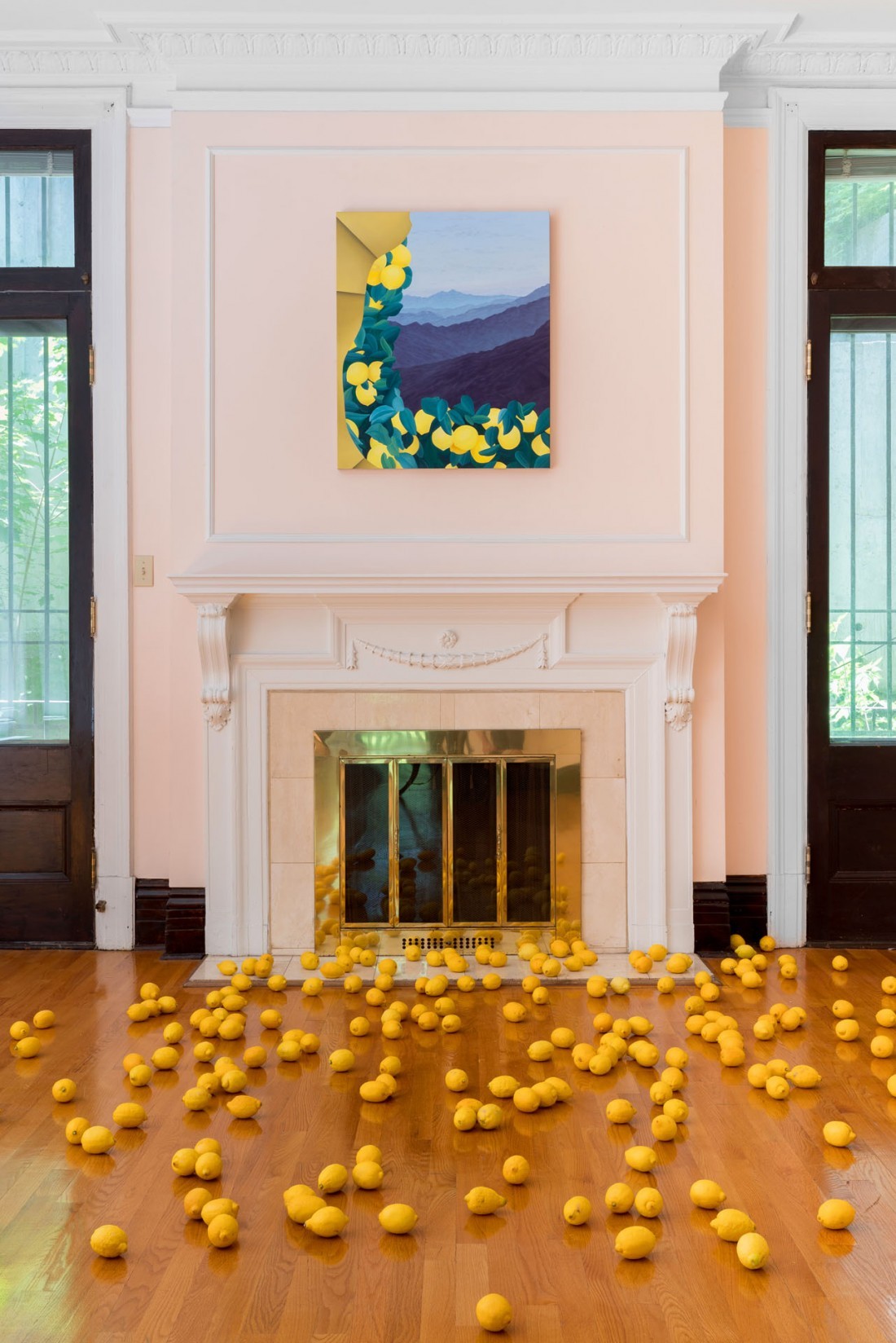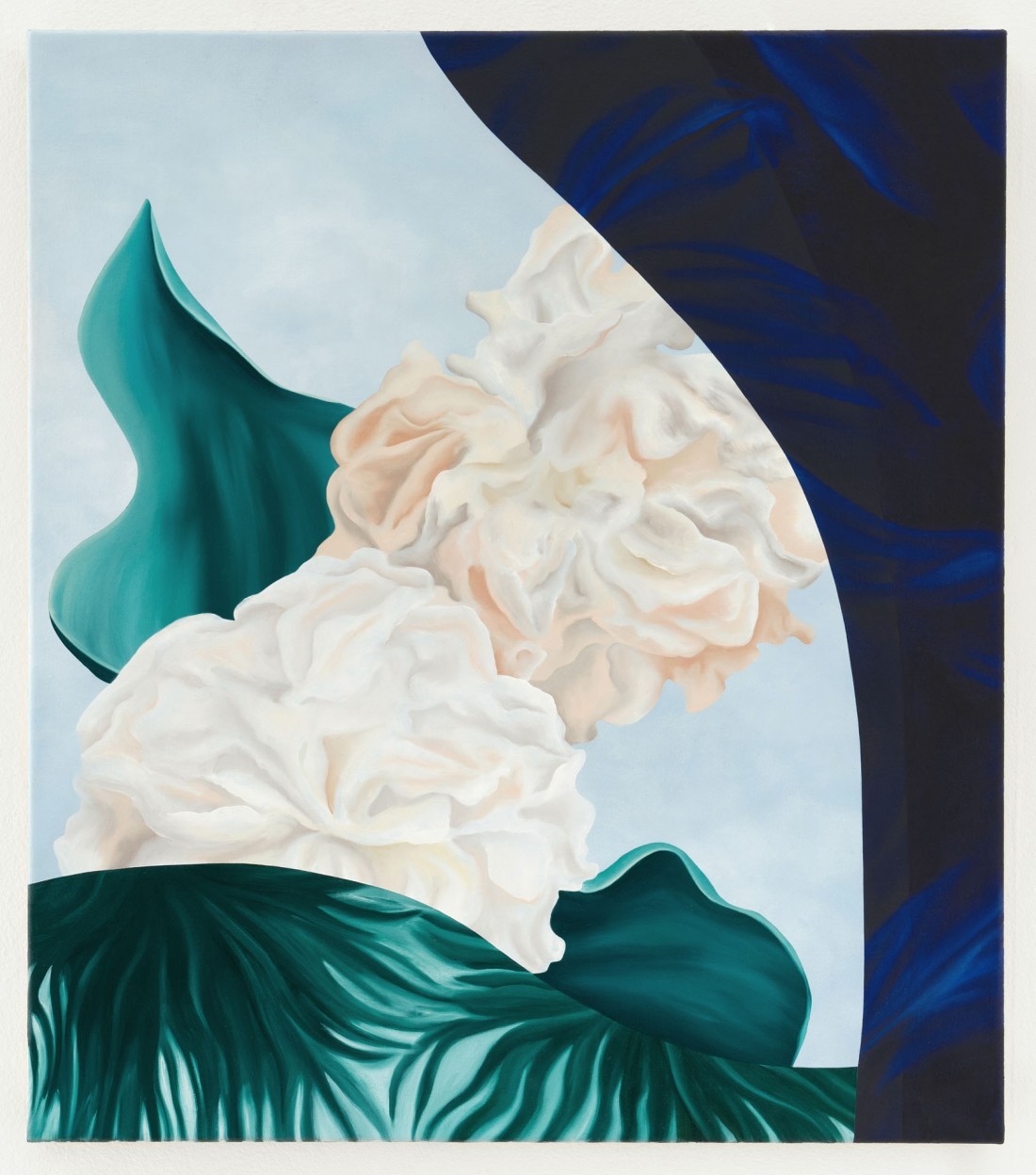Joani Tremblay
“What Makes Life Worth Living”
The Chilean poet Pablo Neruda extolled the beauty and necessity of lemons in “Ode to a Lemon,” one of his most beautiful poems. He palpates the lemon in ways similar to what Joani Tremblay attempts in her recent work. Her paintings, brimming over with dollops of pure colour, are bewitching cornucopias of real and imagined places. Seamlessly dovetailed and collated topographies possess a freshening effervescence. Tremblay is a generous artist, and the fruits of her painterly harvest are on display, lifting spirits through their clarity and luminosity. The abstract brushwork is supple, sophisticated and sensitive. If these works possess utopian signifiers, it is scaffolding for a potent critique of how we live now.
Delicately inflected but never cloying with citrus fragrance, the atmosphere inside the former Czech Consulate’s capacious third room (where Tremblay’s work was installed) was bracing and embracing. When I entered the room, my eye immediately sank into her lush palette. The chromatic amplitude—the lavish hues, ranging from cadmium yellow and orange to ultramarine blue and from zinc white to emerald green—was breathtaking.

Joani Tremblay, installation view, “What Makes Life Worth Living.” Photos: Jean-Michael Seminaro. All images courtesy the artist and Project Pangée.
Is Tremblay perhaps channelling the ghost of Dutch painter Jan Jansz van de Velde (Haarlem, 1620–1662), who, in works like his A ‘Kraak’ Porcelain Bowl Resting on a Pewter Plate with a Peeled Lemon, an Orange and Nuts Near a ‘Roemer’ on a Gilt Stand, depicted lemons with such loving verisimilitude? But lemons in Tremblay’s work are not icons of privilege and luxury, as they were for the Dutch. Here the lemon is an iconic offering, an augury of hope and renewal in our sundered world. Born in winter, the lemon is a premonition of spring, an instantiation of summer, a harbinger of fall. Our experience with the paintings, the lemons and the painted lemons forms a constellation of sorts and induces a reverence that Pablo Neruda alludes to in his poem. The lemons are falling from the tree’s spoked tellurium like manna from paint heaven. In paintings like What Makes Life Worth Living 1, 2020, What Makes Life Worth Living 2, 2020, and What Makes Life Worth Living 3, 2020, Tremblay offers arboreal vignettes leavened not just with clusters of lemons but with glimpses of sea and sky and strange topographies, as though a veil is being drawn aside on impossible places solely for our perusal.
Lively colour, collaged geometries and geographies, and surreal landscapes that evoke both Magritte and Tanguy but also the visionary Remedios Varo inform all these works. But the work itself on formal grounds is beyond any discernible precedent. Insistently, Tremblay’s paintings speak of hope and avowal in a dark time. “Hope” as Rebecca Solnit in Hope in the Dark, 2016, understands it: unconditional submission to the future so as to make the present habitable. The artist says: “In these times of fear, hate, populism, historic anxiety and despair, how can pleasure and utopias emphasize what makes life worth living?” The strange illusory and beautiful utopias that Tremblay assembles in paint are her answer.

Joani Tremblay, Darkness Silence and Nature as a Political Plan, 2020, oil on linen, 24 x 21 inches.
For Tremblay, painting is an act of faith. If it were not for the daunting rigour of her approach and vast repertoire, a voluptuous deep streak of hedonism might be sensed here. Instead there is almost a wilful asceticism and restraint to this painter’s attentions. Carefully thought and carefully built, her paintings resonate on harmonic frequencies that are deeply welcoming. Her constructed landscapes are the result of her tireless research not only in collage but in choosing what to focus on in the first instance. She draws on images from sources as varied as Old Master paintings, digital stock photos of southwestern landscapes and even an archive of cherished personal photos.
Tremblay begins her work as a most diligent and incisive collagist. She digitally crops, adjusts and reassembles a wide array of source imagery until she reaches a threshold, as she puts it, where things begin to cook and gel. Once the “maquette” is rendered, she begins putting paint to her imagined landscapes.
In the 17th century, still-life drawings were produced in legions to adorn the walls of bourgeois households. And no still life was seen as complete without the presence of the humble lemon, an effective means for painters to demonstrate their skill, as Giotto once did with his rendering of a flawless circle, and as Joani Tremblay does here with such seeming effortlessness and equanimity. ❚
“What Makes Life Worth Living” was exhibited at Projet Pangée, Montreal, from June 11 to July 24, 2020.
James D Campbell is a writer and curator in Montreal, and is a frequent contributor to Border Crossings.

